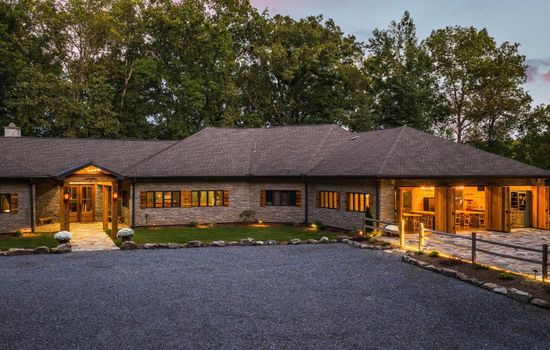The George Washington Carver Museum and visitor center is currently closed for restoration, with a tentative reopening planned for late spring or summer 2025. However, you can tour The Oaks, Booker T. Washington’s home, on Tuesdays, Wednesdays, and Thursdays by reservation.
There is no entrance fee to visit the Tuskegee Institute National Historic Site. It is free to all visitors year-round.
From Montgomery, take Highway 80 East for approximately 40 miles, immersing yourself in the rich history and vibrant culture of this seminal educational hub.
Parking is available next to The Oaks at 1200 West Montgomery Street and in the parking deck behind the Kellogg Center, which has a fee. No overnight parking. Suitable for cars, motorcycles; no specific RV accommodations mentioned.
Accessibility & permits
Emergency
- Cell service availability:Full
Information not accurate?
Help us improve by making a suggestion.
Tuskegee Institute National Historic Site, located in the heart of Macon County, Alabama, is a poignant and powerful destination that embodies the rich history and resilience of African American culture. This historic site, designated as a National Historic Site in 1974, is the only university campus in the country to receive such an honor.
As you step onto the campus of Tuskegee University, the air is thick with the legacy of pioneers like Booker T. Washington and George Washington Carver. The landscape is dotted with over 20 historic buildings, including administrative offices, classrooms, dormitories, and laboratories, each telling a story of perseverance and innovation. The Oaks, Washington’s former home, stands as a testament to the principles of self-sufficiency and progress, with its state-of-the-art steam heating, plumbing, and electricity that were revolutionary for its time.
The site also includes the George Washington Carver Museum, a dairy barn site, and the Tuskegee Cemetery, where Washington and Carver are laid to rest. The historic structures are set amidst a backdrop of Southern charm, with towering oak trees and well-manicured lawns that evoke a sense of tranquility and history.
While Tuskegee Institute National Historic Site is not centered around a lake, its historical significance and cultural depth make it a compelling destination. Visitors can immerse themselves in the site’s rich history through guided tours and interactive exhibits. The nearby town of Tuskegee offers a glimpse into local artisan culture, with boutiques and eateries that celebrate the region’s heritage.
For those seeking a deeper connection, special events such as historical reenactments and educational seminars provide a unique perspective on the site’s importance. Local outfitters and historical societies often organize tours and workshops that highlight the site’s architectural and historical significance.
Tuskegee Institute National Historic Site is a place where history comes alive, where the struggles and triumphs of a community are palpable in every brick and beam. It is a must-visit for anyone interested in the profound impact of African American culture on American society.
- Annual visitors
- 26 000
- Established year
- 1881
Top 3 Facts about Tuskegee Institute National Historic Site
Researchers conducted a longitudinal study from first grade through high school, measuring 65 different body dimensions annually, including weight, height, and ear pit depth, and collecting data on over 200 subjects. Each child was photographed and provided a hair sample for analysis.
This historic site is a haven for diverse wildlife and flora. Stroll through grounds where arachnids, insects, and amphibians thrive. Spot birds such as herons and owls, and glimpses of mammals like deer and raccoons. The area is also home to a variety of reptiles and fish in its waterways. Unique flora includes the majestic oaks and other native Alabama species, creating a rich tapestry of natural and historical significance. Immersing yourself here offers a profound connection to both nature and the seminal educational legacy of its founders.
Explore the Tuskegee National Forest, where the Bartram Trail unwinds through 8.5 miles of moderate terrain, showcasing a tapestry of wildlife habitats, flowering trees, and vibrant wildflowers. Here, you may catch glimpses of turkey and deer in their natural habitat, set against a backdrop of lush forests and diverse ecosystems. The trail’s serene landscape is punctuated by the occasional sighting of these creatures, making each step a journey into the heart of nature.
Family programs
- Junior Ranger
- Ranger-led Tours
- Workshops & Hands-on Activities
- Living History & Cultural Demos
- Volunteer & Stewardship
- Youth Conservation
- Scouting Partnerships.
Travel Tips
Plan Ahead
Plan a spring visit to coincide with the Tuskegee University Founder’s Day celebration. Allow a few days to explore the historic campus and buildings. Park at the visitor lot next to The Oaks. Expect paved paths and some walking; bring water and snacks. Rest at the Carver Museum.
Pack Appropriately
Pack light, breathable clothing for summer visits; layers for cooler spring and fall days. Bring sunscreen, comfortable shoes, and hydration to combat heat and humidity. For longer stays, include camping gear and versatile attire for variable weather conditions.
Respect Wildlife
Respect local flora and fauna by keeping pets on leashes and not introducing exotic animals. Avoid disturbing habitats, especially during breeding seasons. Leave no trace to preserve the natural beauty.
Stay Informed
Wear sturdy footwear and stay hydrated. Be mindful of uneven paths and potential storms. Check weather conditions and park rules. For emergencies, call park authorities.
Seasons
In spring, mild temperatures (60s-70s°F) and blooming flora make for a perfect visit. Enjoy the Equine/Horse Health Fair in April, or catch the Golden Tigers’ Spring Game, showcasing athletic prowess and school spirit. Ideal weather for outdoor exploration.
Summer’s warm temperatures (mid-80s to 90s°F) and humid days make for an immersive visit. Attend the Equine/Horse Health Fair in April or summer programs like MITAS and MITE, offering unique engineering and aviation experiences. Rich history and engaging events amidst the Southern heat.
Visit in fall, with mild temperatures (60s-70s°F) and crisp weather. Attend the 50th Anniversary Community Day in October, featuring interactive stations and historic tours, for a deeply immersive experience.찰
Experience the historic site in winter’s mild chill, from December to February, with temperatures ranging from 36°F to 56°F. Crisp air and fewer crowds make for a serene, immersive visit. Ideal for those seeking a tranquil historical exploration.
Information not accurate?
Help us improve by making a suggestion.
Where to stay
Frequently Asked Questions
Ready to dive into what Tuskegee Institute National Historic Site has to offer? Let’s tackle some of the burning questions you might have as you plan your visit!
-
The closest city to the historic site is Tuskegee, Alabama, where the site is located on the campus of Tuskegee University. Other nearby cities include Montgomery, which is about 40 miles away, and Phenix City, approximately 35 miles away.
-
Dogs must be restrained or kept on a leash no longer than 6 feet at all times. They are not allowed inside buildings. Owners must pick up after their dogs and ensure they wear a collar.
-
There is designated parking available near the historic site, including spots next to The Oaks and in the Kellogg Center’s parking deck, though the latter may have a fee. No specific information is provided about parking for RVs, campers, or trailers.
-
Tuskegee Institute, founded by Booker T. Washington in 1881 in Tuskegee, Alabama, is significant for its role in educating African Americans and promoting vocational and industrial education. It was here that George Washington Carver conducted groundbreaking agricultural research and where the Tuskegee Airmen flight training program was established. The site is a landmark in African American history and a symbol of the struggle for equality and education, earning its designation as a National Historic Site in 1974.








